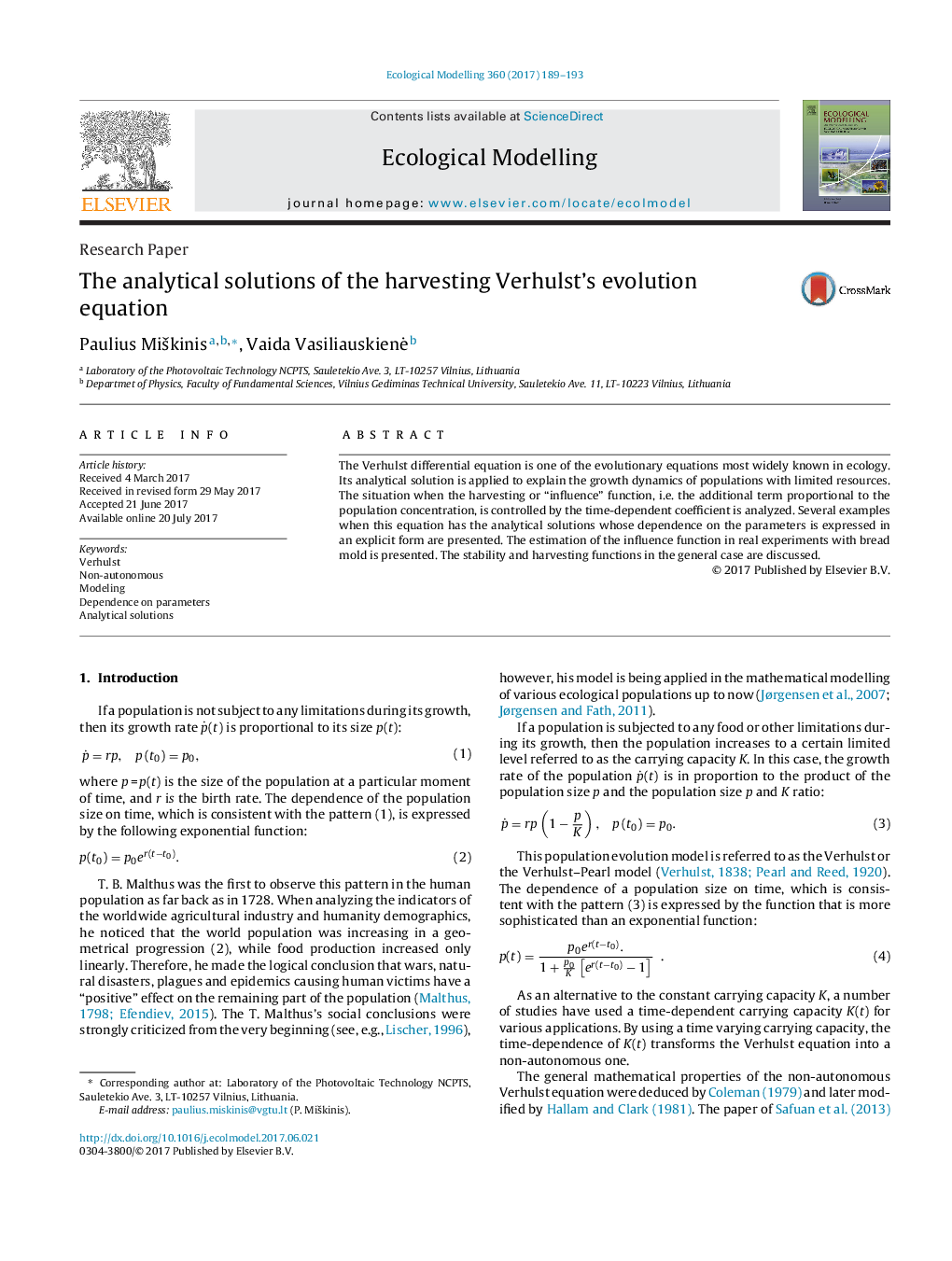| Article ID | Journal | Published Year | Pages | File Type |
|---|---|---|---|---|
| 5742058 | Ecological Modelling | 2017 | 5 Pages |
â¢The analytical solution to the population evolution model is proposed.â¢The approach is useful for assessing whether the population concentration will change according to the Verhulst model with constant and variable harvesting intensity.â¢The method accounts the explicit form of the dependence on the parameters of the model.â¢The influence function in real experiments with bread mold is presented.
The Verhulst differential equation is one of the evolutionary equations most widely known in ecology. Its analytical solution is applied to explain the growth dynamics of populations with limited resources. The situation when the harvesting or “influence” function, i.e. the additional term proportional to the population concentration, is controlled by the time-dependent coefficient is analyzed. Several examples when this equation has the analytical solutions whose dependence on the parameters is expressed in an explicit form are presented. The estimation of the influence function in real experiments with bread mold is presented. The stability and harvesting functions in the general case are discussed.
